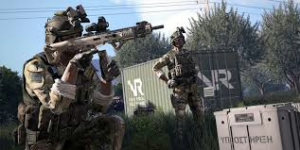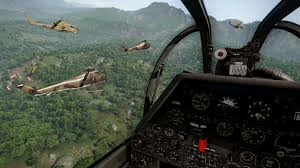Overview of the Restructuring
The Singapore Armed Forces (SAF) has undergone a significant restructuring with the official launch of two new commands under its Digital and Intelligence Service (DIS) on March 18, 2025:
- Defence Cyber Command (DCCOM) – Focused on defending the Ministry of Defence (Mindef), SAF, and, by extension, Singapore against cyber threats
- SAF C4 and Digitalisation Command (SAFC4DC) – Tasked with consolidating software and hardware capabilities to accelerate digitalisation efforts across the SAF
This reorganization represents a major evolution in the SAF’s approach to digital warfare and cybersecurity. Following its inauguration in October 2022, DIS will serve as the fourth service branch of the SAF.
Key Trends Driving the Restructuring
1. Evolution of Warfare into the Digital Domain
The restructuring reflects the understanding that modern warfare extends beyond traditional physical domains into cyberspace. Critical infrastructure protection now encompasses both physical and virtual defense mechanisms.
2. Increasing Sophistication of Cyber Threats
Defence Minister Ng Eng Hen mentioned that AI tools have “the potential to dramatically reduce the time it would take attackers to exploit vulnerabilities.” Threats are constantly evolving, from zero-day exploits to ransomware and advanced malware.
3. Convergence of Digital Technologies
The creation of the SAFC4DC signals recognition that various digital technologies—including network infrastructure, cloud computing, data centers, AI models, and software development—need to be unified under a single strategic vision.
4. AI Integration as a Strategic Priority
The establishment of the SAF AI Centre within SAFC4DC highlights AI’s growing importance in military operations. The threefold focus on enabling safe AI across domains, employing AI for a wide range of operations, and building expertise through partnerships demonstrates Singapore’s commitment to AI as a transformative military technology.
Causes for the Restructuring
1. Organizational Efficiency
Rear-Admiral Yong Wei Hsiung specifically mentioned that placing various entities within two discrete commands enables “better unity of command and clarity of mission,” reducing inefficiencies and facilitating greater integration between related groups.
2. National Security Imperatives
The recognition that cyber attacks against commercial companies and critical infrastructure are often “coordinated, complex attacks by criminal groups and state actors” necessitates a more cohesive defense strategy.
3. Technological Acceleration
The rapid development and proliferation of AI and other digital technologies require specialized organizational structures to harness these advancements effectively.
4. Interconnected Defense Posture
The restructuring acknowledges that “cyber security is a team sport” and that Singapore’s highly interconnected society means its cyber defenses “are only as strong as its weakest link.”
Impact and Implications
1. Enhanced Cyber Defense Capabilities
The consolidation of cyber-security entities under DCCOM will likely lead to more effective defense capabilities, mainly through the Cyber Protection Group (CPG) and Cyber Threat Intelligence Group.
2. Accelerated Digital Transformation
By bringing the SAF’s entire technology stack under SAFC4DC, the military can more effectively implement and scale digital solutions across the organization.
3. Cross-Government Integration
The DIS will work closely with other government agencies, particularly the Cyber Security Agency (CSA), strengthening Singapore’s whole-of-government approach to cybersecurity.
4. Talent Development and Acquisition
The restructuring creates new opportunities and challenges for personnel recruitment. DIS is actively seeking both those with formal qualifications in computer science, AI, and cybersecurity and mid-career professionals with relevant industry experience.
5. Greater Operational Flexibility
The new organizational structure enables the SAF to adapt more quickly to emerging threats and technological opportunities in the digital domain.
6. Democratization of AI Capabilities
ME6 Shawn Kan’s mention of “low code solutions” indicates an intent to make AI capabilities more accessible to personnel without coding expertise, potentially expanding the reach and impact of digital tools throughout the SAF.
Conclusion
The restructuring of the DIS represents a strategic shift in Singapore’s military posture, recognizing the increasingly central role that digital and cyber capabilities play in national security. This transformation aligns with global trends in military modernization while addressing Singapore’s specific security environment as a highly digitalized society with unique vulnerabilities.
By creating specialized commands with clear mandates, the SAF is positioning itself to better defend against evolving threats while leveraging digital technologies to enhance its overall capabilities. The emphasis on collaboration with other government agencies and industry partners further demonstrates Singapore’s comprehensive approach to digital defense and security.
Impact of Digital Transformation on Intelligence and Security in Singapore
Strategic Repositioning in the Cyber Domain
Singapore’s establishment of the Digital and Intelligence Service (DIS) as the fourth branch of its armed forces represents a fundamental repositioning of its defense posture. This move acknowledges cyberspace as a critical domain on par with land, sea, and air operations. By creating dedicated commands like DCCOM and SAFC4DC, Singapore has formalized its commitment to digital security as a core national defense capability rather than merely a support function.
Enhanced Threat Detection and Response
The digital transformation of intelligence services enables more sophisticated threat detection through:
- Proactive monitoring: The creation of the Cyber Threat Intelligence Group allows Singapore to establish early warning systems for emerging cyber threats
- Integration of intelligence sources: Digital platforms facilitate faster correlation of information from various sources
- Reduced response time: Centralized command structures can coordinate faster responses to identified threats
These capabilities are crucial for Singapore, which faces sophisticated state and non-state actors targeting its critical infrastructure and government systems.
Economic Security Implications
As a global financial hub and technology center, Singapore’s economic security is inseparable from its digital security:
- Protection of financial infrastructure: The digital transformation helps safeguard Singapore’s position as a financial center
- Defense of intellectual property: Enhanced intelligence capabilities help protect R&D investments and technological innovations
- Securing supply chains: Digital intelligence can better monitor vulnerabilities in increasingly complex supply networks
The DIS restructuring acknowledges that economic and national security are deeply intertwined in the digital age.
Workforce Transformation
The article highlights that DIS is actively recruiting professionals with digital expertise, signaling a significant shift in military personnel requirements:
- New skill profiles: Moving beyond traditional military capabilities to prioritize technical expertise
- Integration of civilian specialists: The Enhanced Expertise Deployment Scheme brings industry professionals into national service roles
- Continuous learning imperative: The rapid evolution of technology necessitates ongoing skill development
This transformation creates both opportunities and challenges for Singapore’s defense workforce planning and development.
National Resilience Framework
The DIS restructuring reflects Singapore’s broader approach to digital resilience:
- Whole-of-nation approach: The article emphasizes collaboration between DIS, the Cyber Security Agency, and other government agencies
- Public-private partnership: Acknowledging that critical infrastructure spans both public and private sectors
- Digital literacy emphasis: Rear-Admiral Yong’s comment that “cyber security is a team sport” suggests a broader push for digital awareness.
This framework acknowledges that in a highly interconnected society, security cannot be siloed within government agencies alone.
AI as a Transformative Force
The establishment of the SAF AI Centre signals recognition of AI’s transformative impact on intelligence and security:
- AI-enhanced analytics: Allowing faster processing of vast intelligence datasets
- Democratized capabilities: The focus on “low code solutions” aims to extend AI capabilities beyond technical specialists
- Defensive and offensive applications: AI technologies have dual-use potential across the security spectrum
Singapore’s investment in this area positions it at the forefront of AI applications in defense and security.
Regional Security Dynamics
Singapore’s digital transformation in defense has implications for regional security:
- Deterrence capabilities: Enhanced cyber capabilities serve as a deterrent against potential aggressors
- Regional leadership: Singapore can potentially share expertise with ASEAN partners
- New security cooperation frameworks: Digital threats require new forms of international cooperation
As regional powers develop their own digital capabilities, Singapore’s advancements help maintain strategic balance.
Future Challenges
Despite the benefits, Singapore’s digital transformation in intelligence and security faces several challenges:
- Rapidly evolving threat landscape: As noted in the article, attackers are constantly developing new methods
- Talent acquisition and retention: Competition with the private sector for digital talent
- Technological sovereignty: Balancing international cooperation with the need for indigenous capabilities
- Ethical and legal frameworks: Navigating privacy concerns and regulatory boundaries for intelligence operations
How Singapore addresses these challenges will determine the long-term success of its digital transformation in defense.
Conclusion
The digital transformation of Singapore’s intelligence and security apparatus, exemplified by the DIS restructuring, represents a fundamental shift in how the nation conceptualizes and implements its defense strategy. By centralizing digital capabilities, integrating AI technologies, and adopting a whole-of-nation approach to security, Singapore is positioning itself to address emerging threats in an increasingly complex digital landscape.
This transformation impacts not just military readiness but extends to economic security, workforce development, and regional dynamics. As cyber threats continue to evolve in sophistication and impact, Singapore’s investments in digital intelligence capabilities will likely prove crucial to maintaining its sovereignty and prosperity in the digital age.
Arma 3: The Pinnacle of Military Simulation Gaming
Overview

Arma 3 is widely considered the most comprehensive and realistic military simulation game available. It offers an unprecedented level of detail in tactical warfare simulation.
Gameplay Mechanics
Realism
- Hyper-realistic ballistics model
- Authentic weapon and vehicle handling
- Complex environmental interaction
- Precise damage modeling
- Realistic soldier movement and physics

Scale and Scope
- Massive open-world environments
- Supports 100+ simultaneous players
- Dynamic mission generation
- Extensive modding capabilities
- Multiple game modes, including:
- Multiplayer combat
- Cooperative missions
- Individual scenarios
- Large-scale military operations

Technical Achievements
- Cutting-edge graphics engine
- Procedurally generated terrains
- Advanced AI behavior systems
- Realistic sound design
- Complex weapon and equipment customization
Unique Features

- Player-created missions and scenarios
- Community-driven content
- Extensive mod support
- Realistic military communication systems
- Multiple playable military roles (infantry, vehicle crews, pilots, commanders)
Challenges
- Steep learning curve
- High system requirements
- Complex control schemes
- Potentially overwhelming for casual gamers

Community and Longevity
- Active global player base
- Continuous updates and expansions
- Robust modding community
- Used by military training programs for tactical scenarios

Verdict
Arma 3 remains the gold standard for military simulation, offering unparalleled depth and authenticity in virtual warfare experiences.
Rating: 9/10
Maxthon
Maxthon has set out on an ambitious journey aimed at significantly bolstering the security of web applications, fueled by a resolute commitment to safeguarding users and their confidential data. At the heart of this initiative lies a collection of sophisticated encryption protocols, which act as a robust barrier for the information exchanged between individuals and various online services. Every interaction—be it the sharing of passwords or personal information—is protected within these encrypted channels, effectively preventing unauthorised access attempts from intruders.
This meticulous emphasis on encryption marks merely the initial phase of Maxthon’s extensive security framework. Acknowledging that cyber threats are constantly evolving, Maxthon adopts a forward-thinking approach to user protection. The browser is engineered to adapt to emerging challenges, incorporating regular updates that promptly address any vulnerabilities that may surface. Users are strongly encouraged to activate automatic updates as part of their cybersecurity regimen, ensuring they can seamlessly take advantage of the latest fixes without any hassle.
In today’s rapidly changing digital environment, Maxthon’s unwavering commitment to ongoing security enhancement signifies not only its responsibility toward users but also its firm dedication to nurturing trust in online engagements. With each new update rolled out, users can navigate the web with peace of mind, assured that their information is continuously safeguarded against ever-emerging threats lurking in cyberspace.

